Henganofi Patrol Post 1957 and 1958 – Photos from Ross Johnson
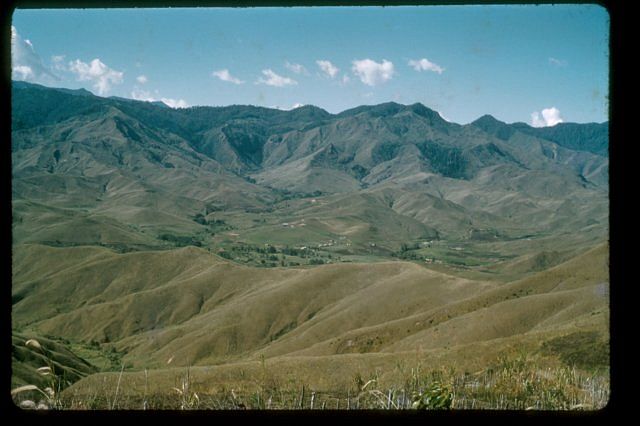
Henganofi Patrol Post, Goroka Sub-district, as seen from the Fayantina Valley Road. The station is located at the confluence of the Gafutina and Kamamuntina rivers. The Highlands Highway runs past the station.
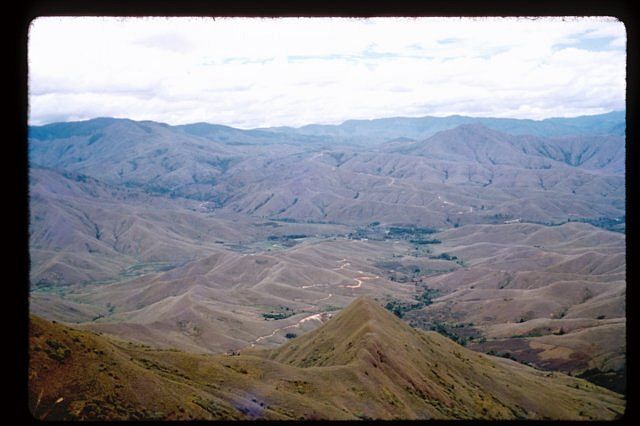
Another view of Henganofi (green patch in middle distance) taken from Mt Sunobiga, a prominent peak on the divide seaparating the Kamamuntina and Dunatina rivers. The "road" in the foreground is actually a water race. The Fayantina Valley road can be seen above and slightly to the right of the station.
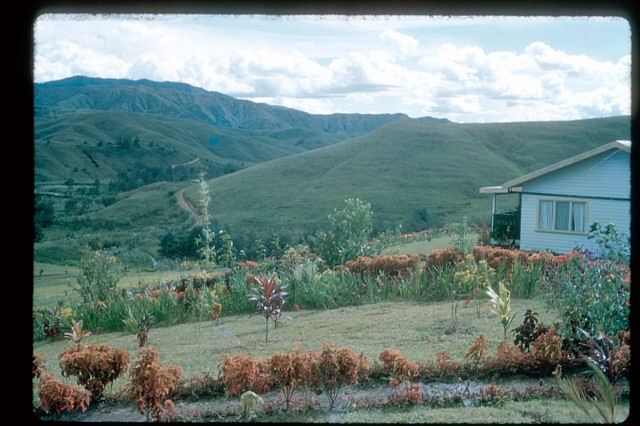
The OIC's residence on a hill (aren't they all?) above the station. The Highlands Highway can be seen middle left of photo.
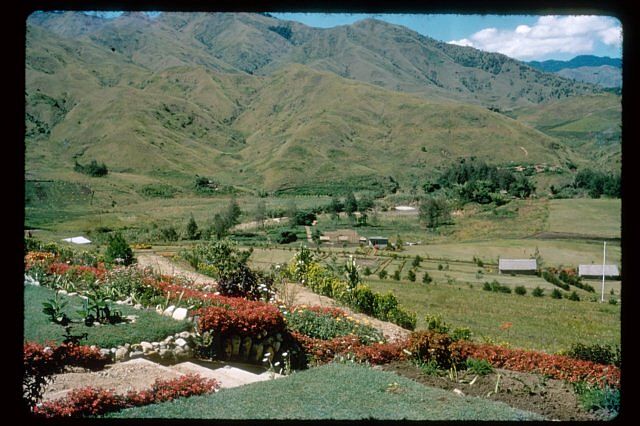
Another view of the station looking towards the school (middle right) and the Medical Assistant's residence (middle left).
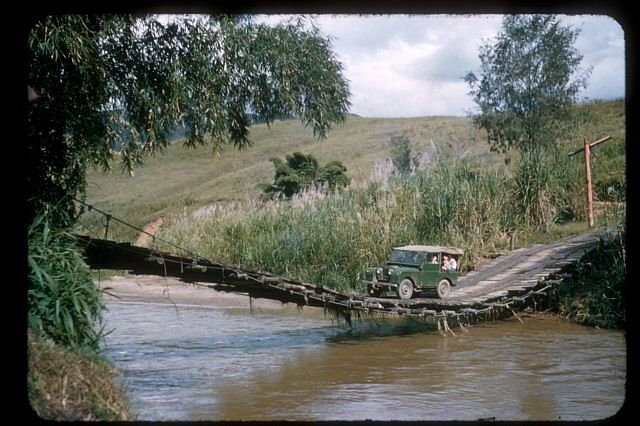
This, believe it or not, was a bridge on the Highlands Highway at Hengaofi - it was later replaced by PWD with a steel girder bridge.
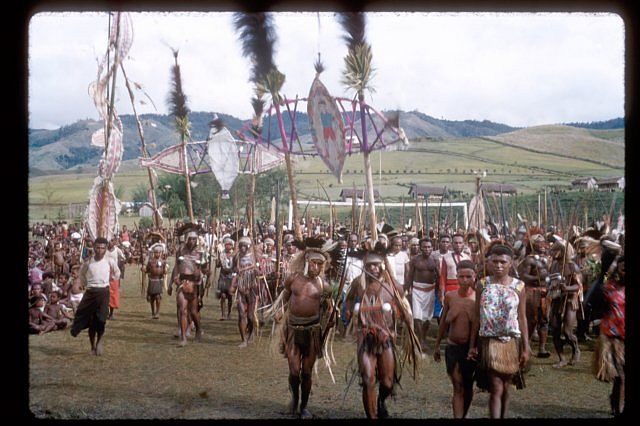
A short time after we arrived at Henganofi, the locals put on a welcoming sing-sing. Both myself and my wife are depicted on the banner/frame being carried by the second line of dancers.
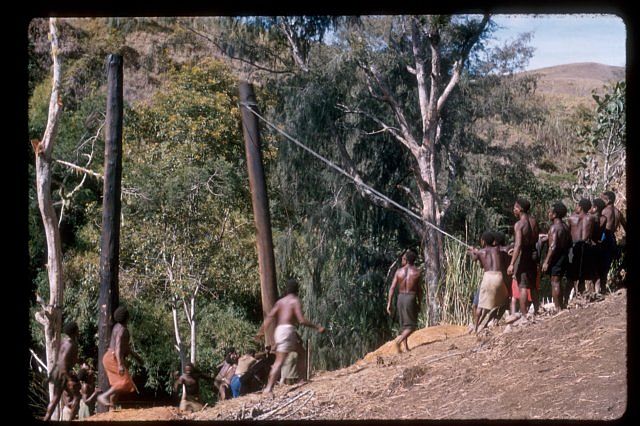
One of the obstacles in building the road into the Fayantina Valley from Henganofi was crossing the Gafutina river just below the station. This and the following three photos give some idea of how the Kiap Construction Company built suspension bridges.
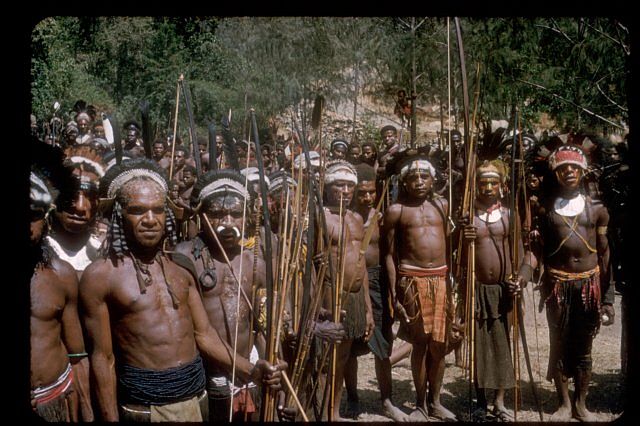
To mark the occasion we all had a sing-sing - the bridge (or part of the approaches) can be seen in the background
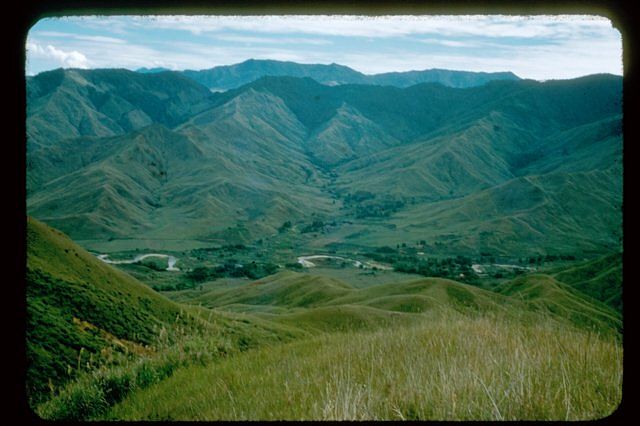
Finintegu airstrip (long since abandoned) - the strip can be seen if you look closely in the middle distance just above the bend in the Kamamuntina river. This was where the RAAF landed a DC3 in 1952 mistaking it for Goroka.
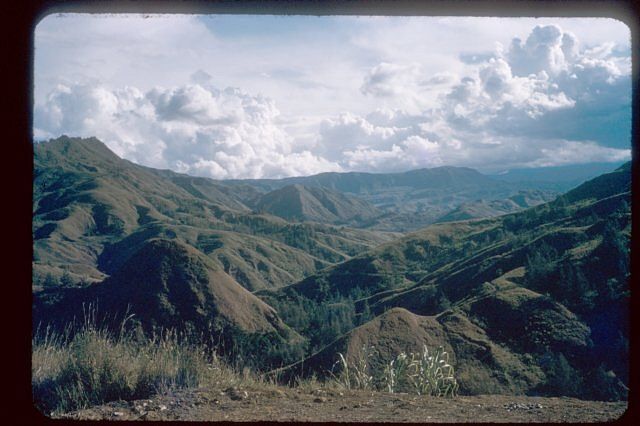
The Fayantina Valley from the road looking south east. This road linked up with the road from Goroka to Lufa Patrol Post with an extension being built towards Okapa
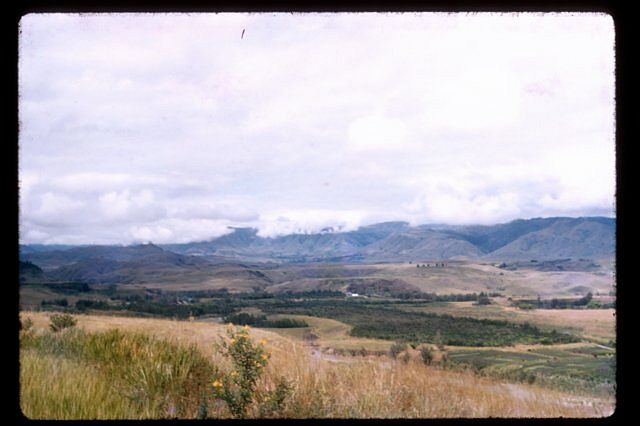
The Dunantina River flats and Dunantina coffee plantation - looking west into the Asaro Valley (Goroka) grasslands. Bena Bena would be just over the low hills in the middle distance.
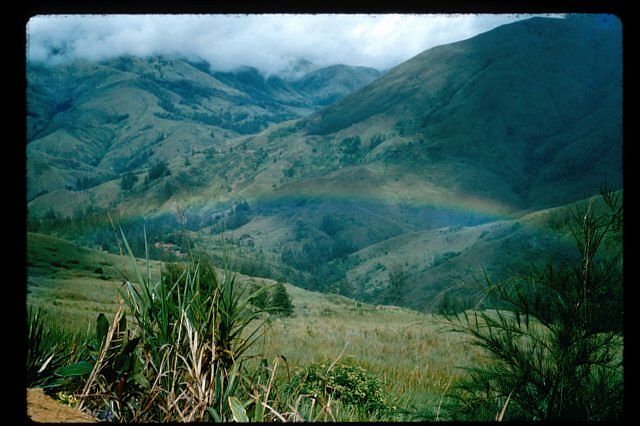
Somewhere in the Fayantina Valley - there's no truth in the adage that there is a pot of gold at the end of the rainbow.
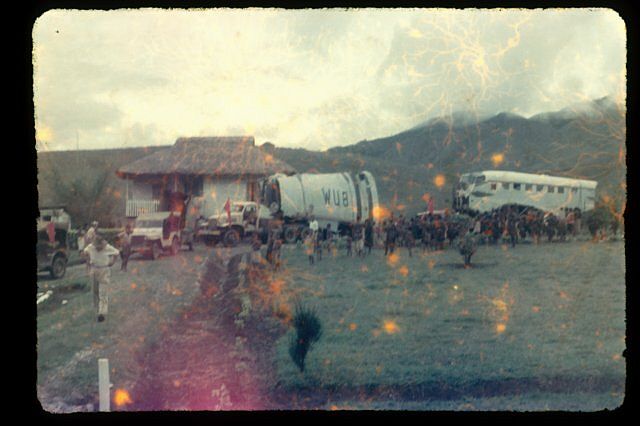
Taken with Anscochrome film which deteriorates rapidly - colour fastness is not one of its qualities. This photo is of historical interest as it shows one of Gibbes Sepik Airways Junkers, which crashed at Wau, being transported by Jack Thick on a series of low-loaders. A breather was taken at Henganofi before continuing on to Goroka - presumably for repairs or maybe spare parts!
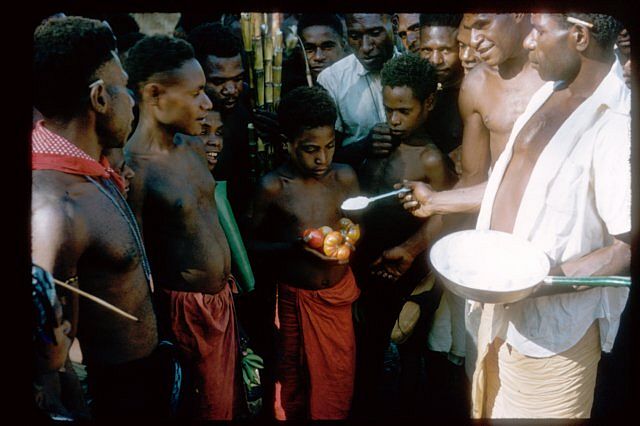
On patrol - purchasing some fresh food with salt. The person doing the transaction is Cpl Kombo (he was one of the Police injured when PO Szarka and CPO Harris were killed at Telefomin in 1953).
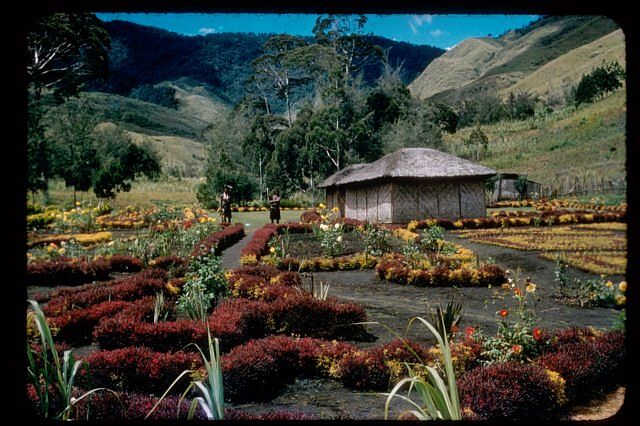
An interesting story here - House belongs to Bono Azunifa who was the Luluai of Kesavaka village. When I went to Henganofi, Bono was in gaol (he became my garden boy). On release he went back and landscaped his own home. Notice the "broad arrow" garden beds as a reminder of his prison laplap. Bono later became the Member for Henganofi in the first House of Assembly (1964).
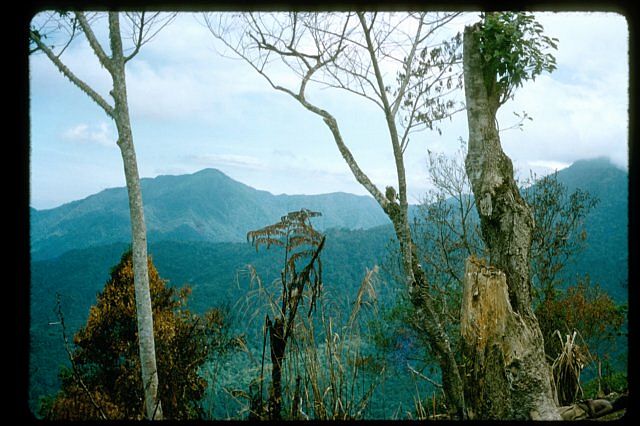
This is the Ramu/Purari Divide (Bismarck Range) in the Upper Dunantina. Doesn't show much but it is a nice picture.
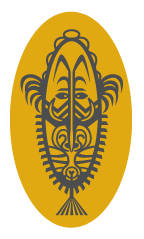
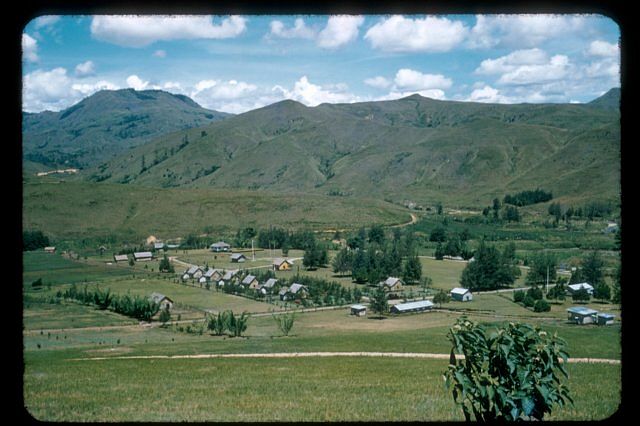
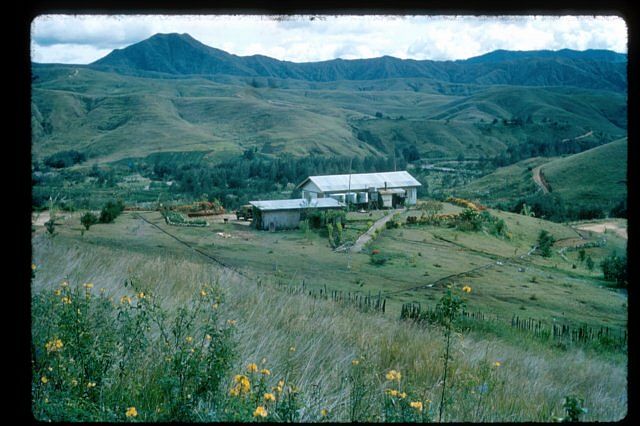
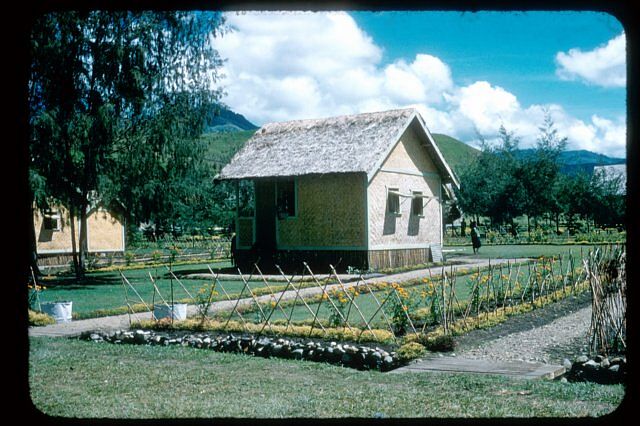
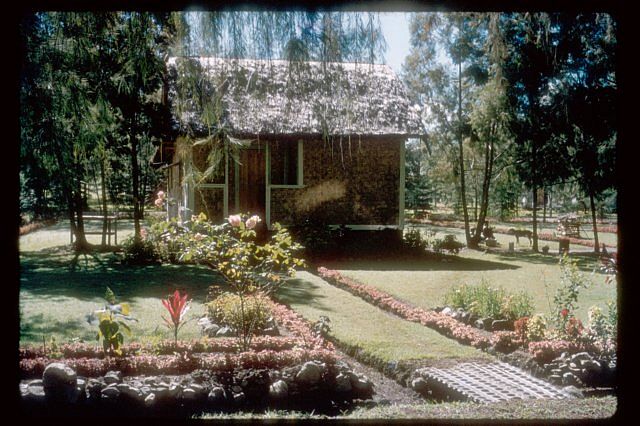
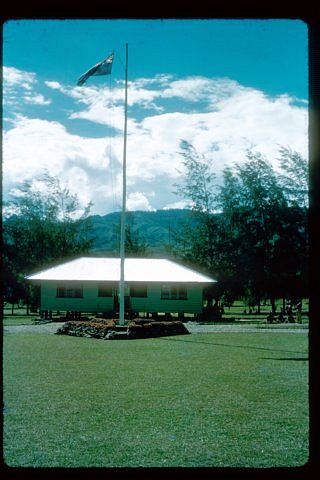
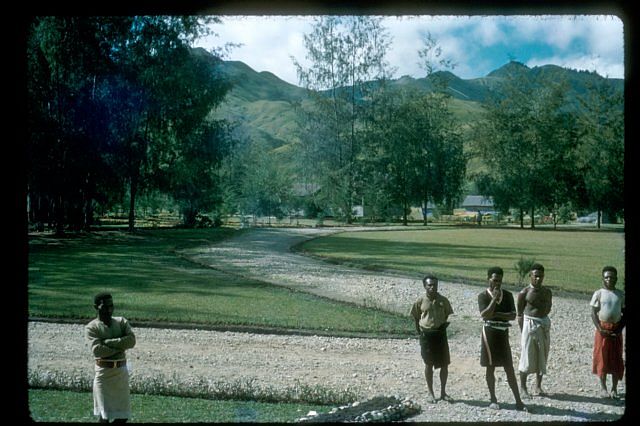
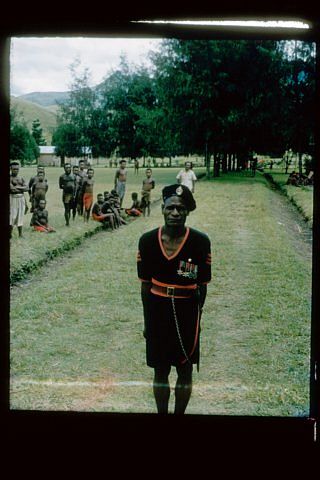
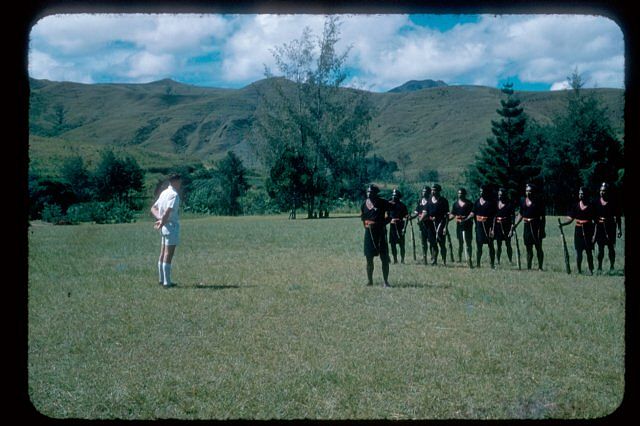
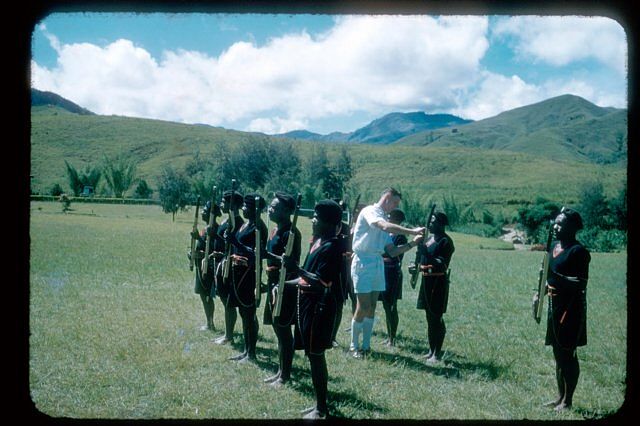
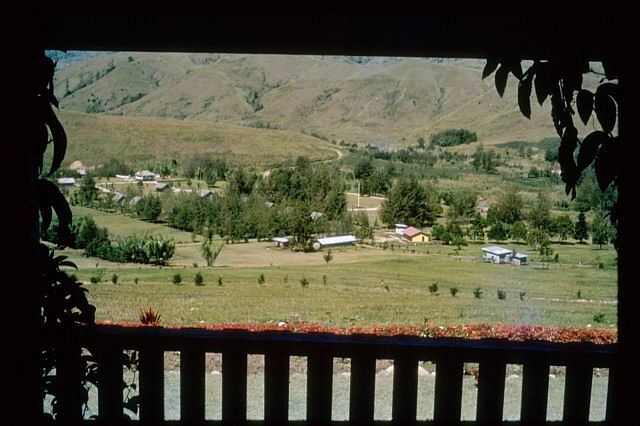
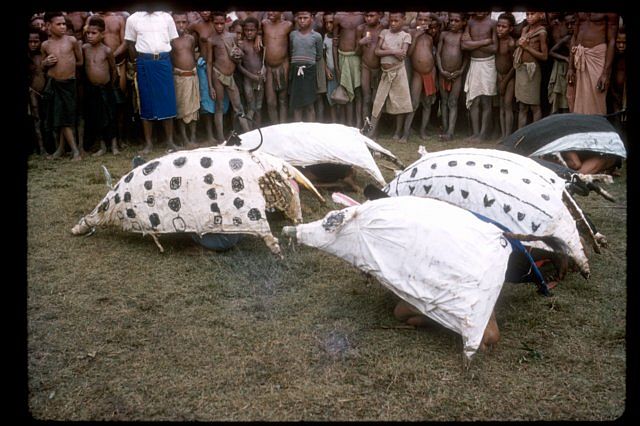
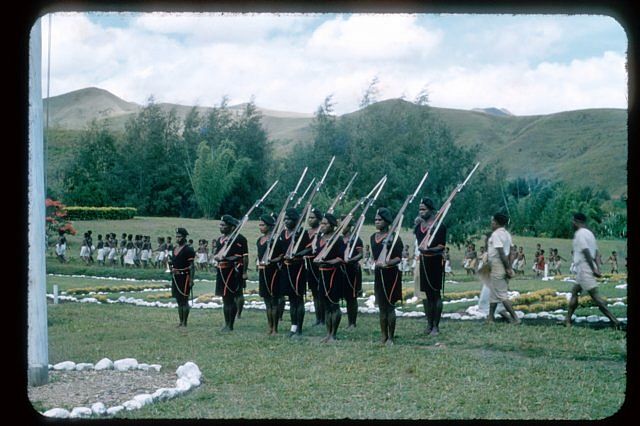
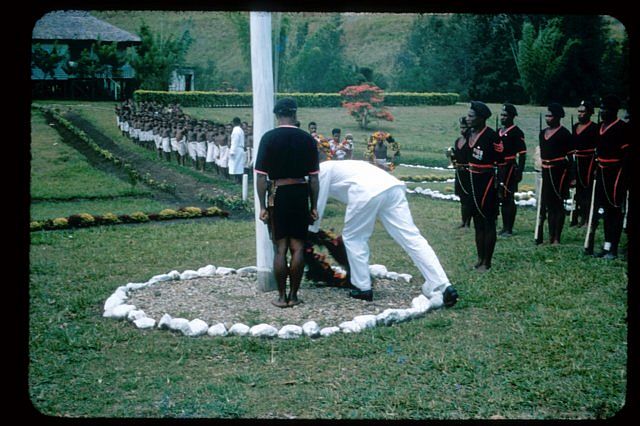
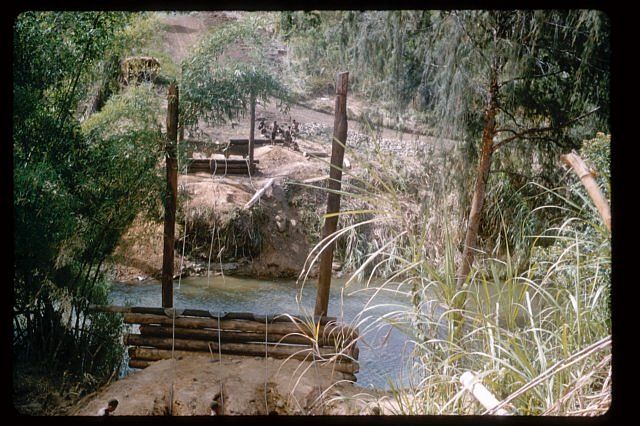
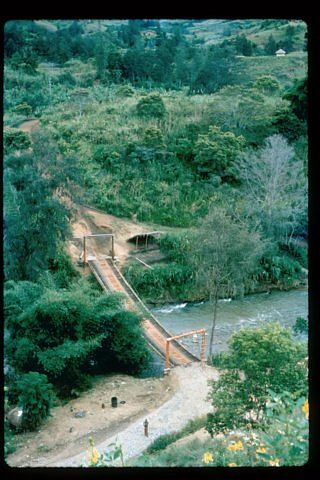
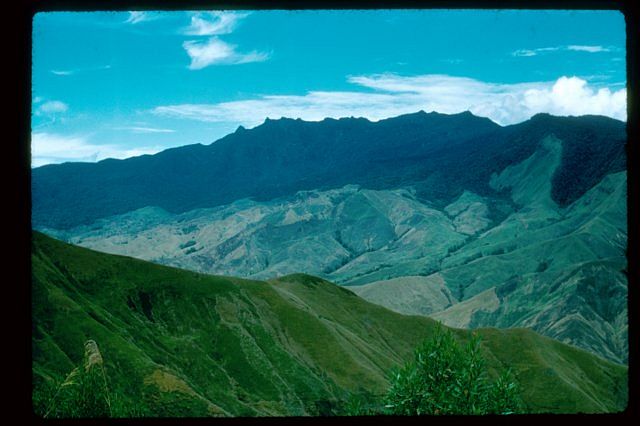
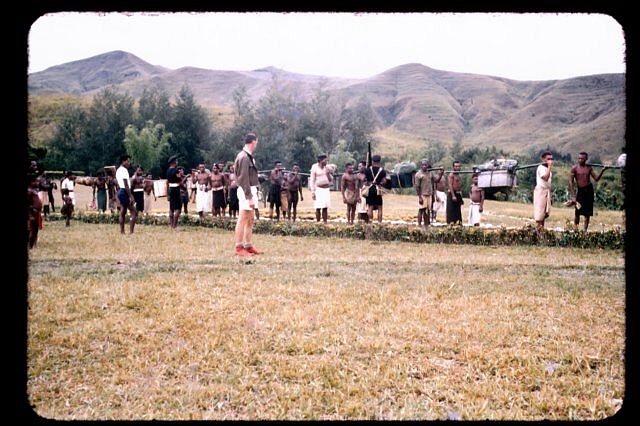
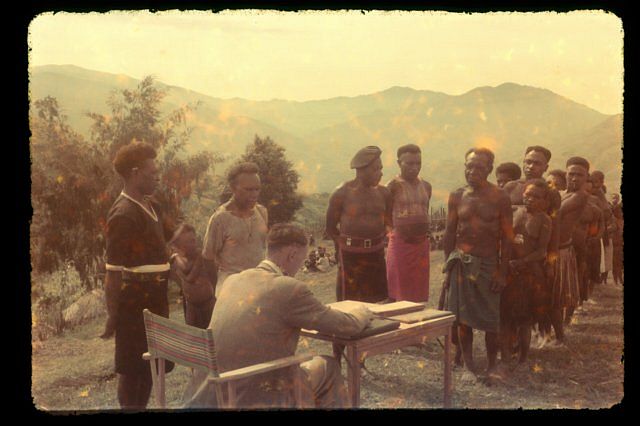
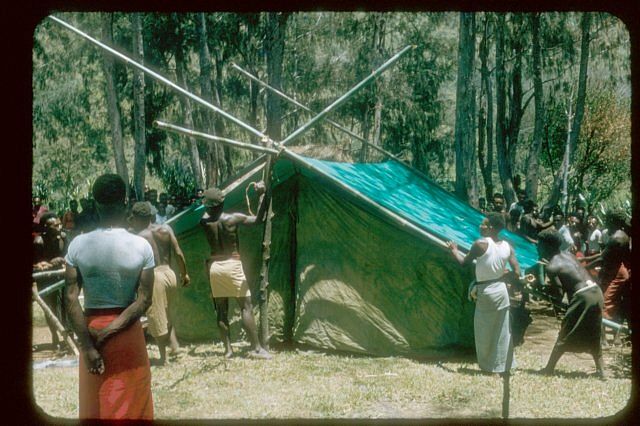
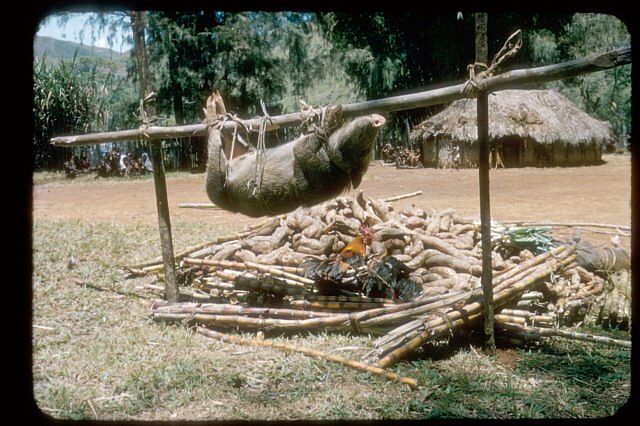
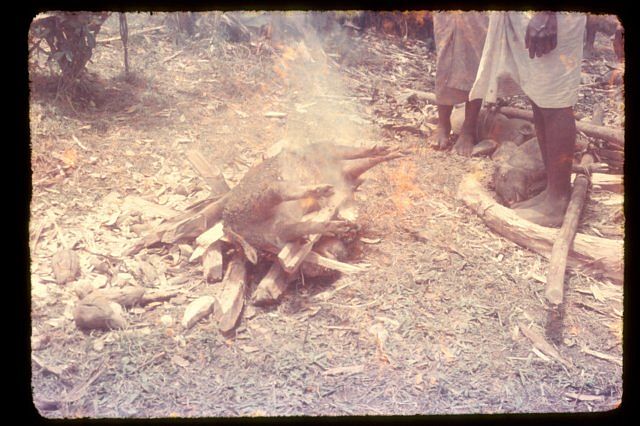
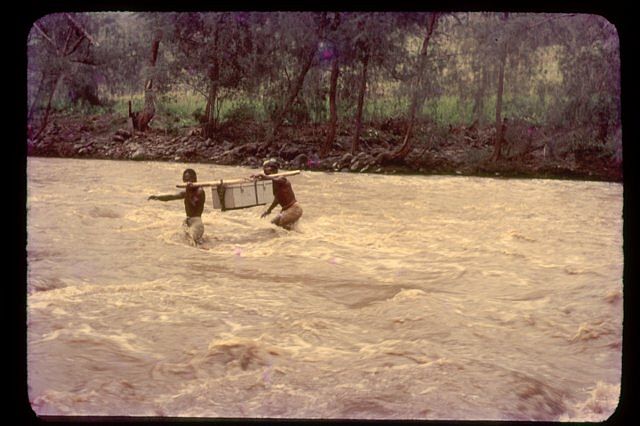
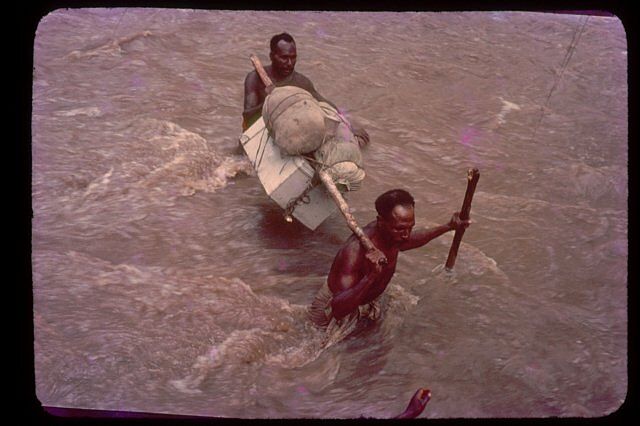
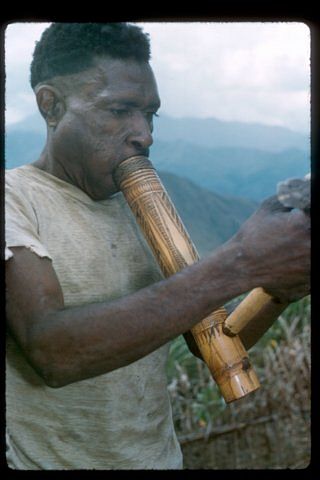
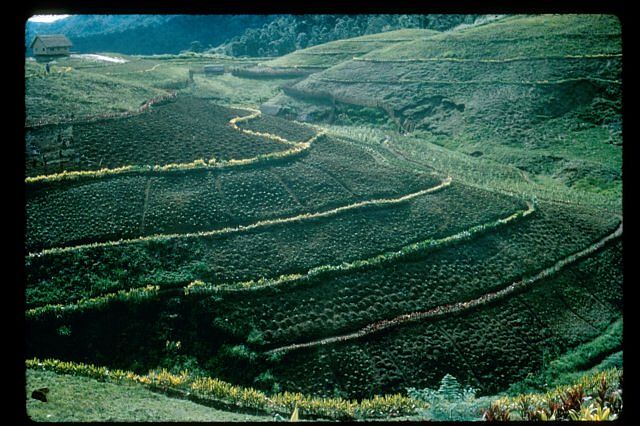
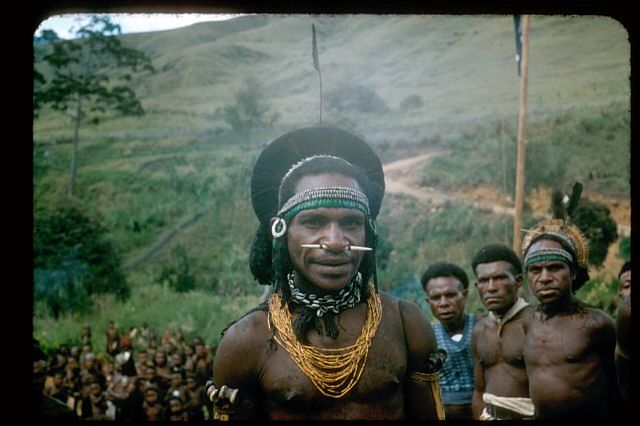
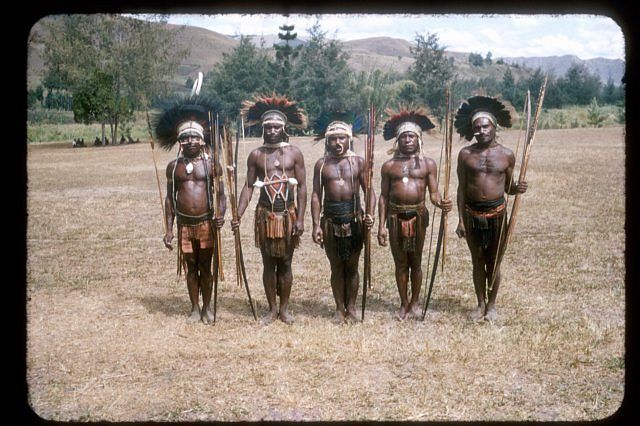
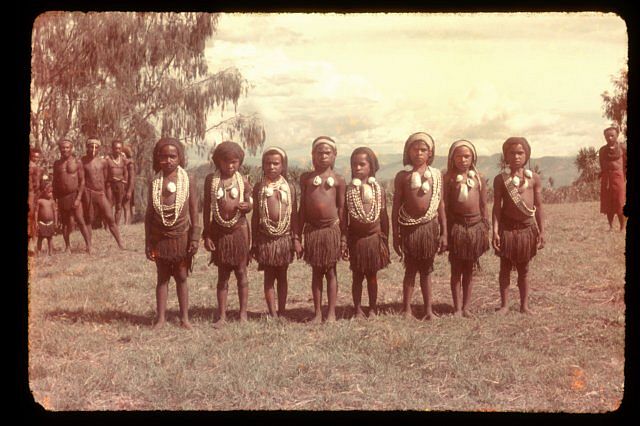
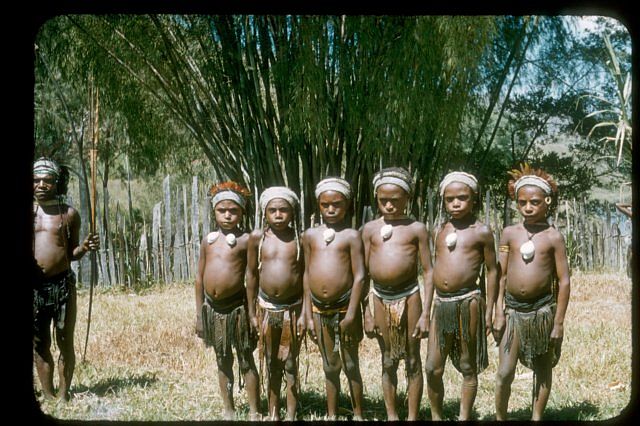
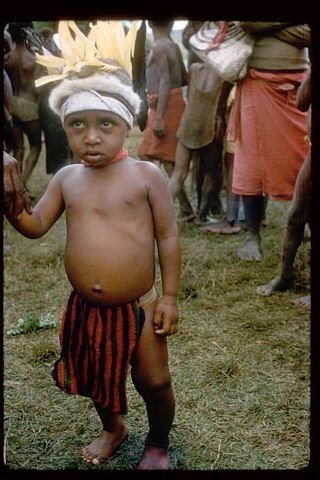
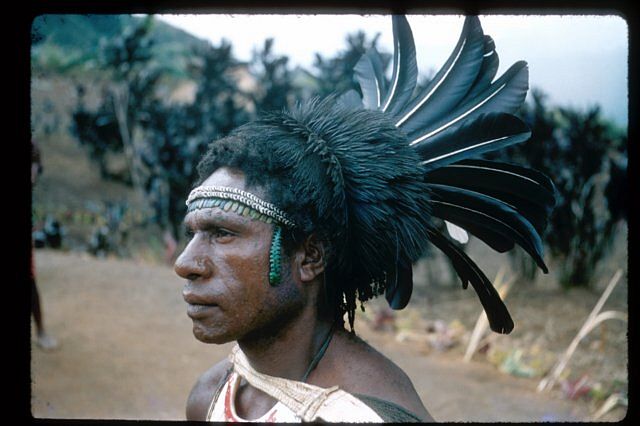
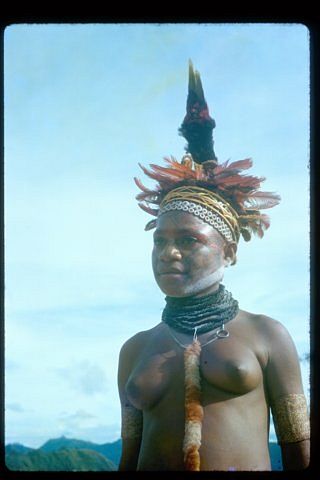
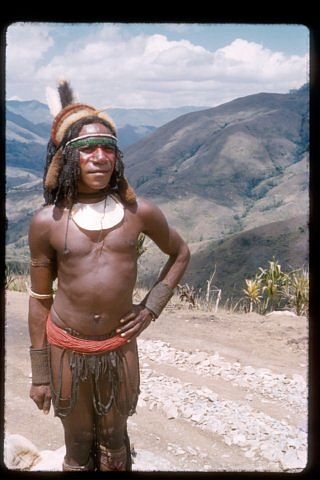
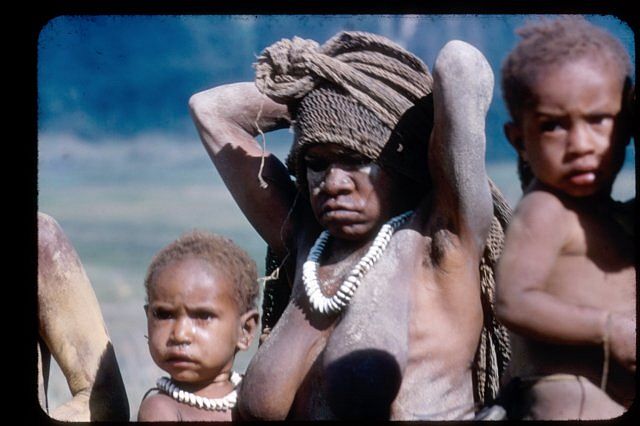
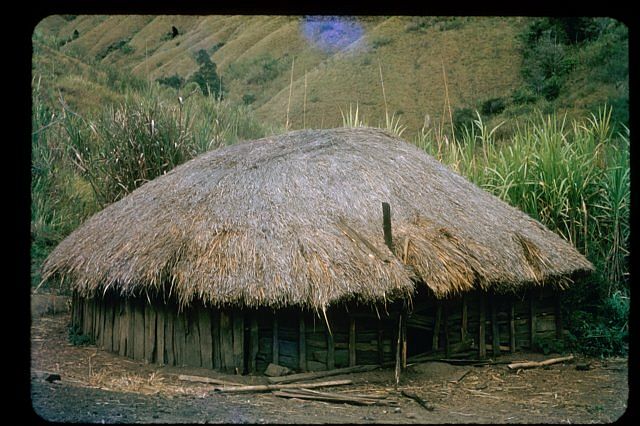
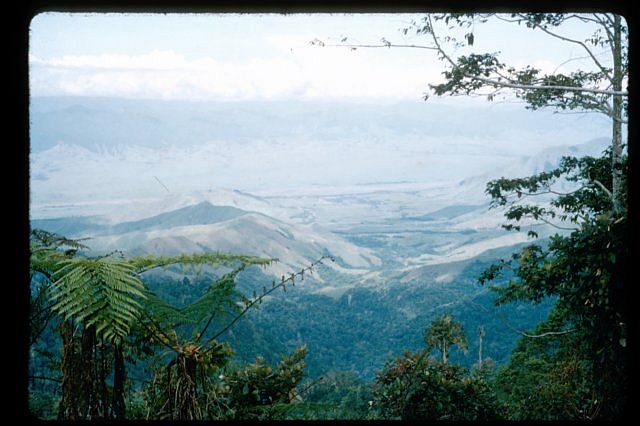

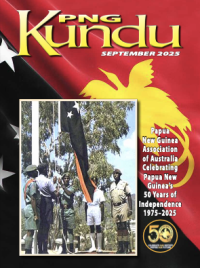
Ross, Thank you for your story and photos about the Henganofi Patrol Post 1957 and 1958. The colour photos are extraordinary. Were they originally colour slides? Your photo of Bono Azanifa’s house and garden is particularly interesting to me. Bono was on the Coffee Marketing Board with my Dad in the mid sixties and Bono invited our family to stay for a weekend in his village at Kesavaka. There was a big sing sing while we were there and I remember a helicopter landing during the sing sing. Kesavaka was a clean and tidy village and the manicured flower and shrub edges at Bono’s house look like your photos of the Henganofi Patrol Post where you wrote Bono had worked for you as a garden boy. I guess in a1958 as you mentioned he was in gaol in 1957 when you arrived and later after his release had made his garden bed design around the broad arrow as a reminder of his prison lap lap. Do you remember his crime and where was the kalabus? I am amazed at how orderly it was at your patrol post in 1957 and 1958.
I found an interesting report online which was sent to the Institute of World Affairs New York in 1967 titled Politics in a Primitive Area. The report details how Bono went on a couple of trips to Australia in the early sixties. His village Kesavaka was noted as a model of cleanliness and good planning with both coffee and European vegetables grown in abundance. He was an assistant magistrate and ran for the House of Assembly. The report mentions that the Henganofi area had been pacified some years before the Lufa District and the local government was a well established institution. After seeing your photos and comments I can guess that the patrol post had a positive impact on the area. The report notes that Bono was the only candidate in 1964 to have a campaign poster. It read, “Oli makim Bono long big guvman.” The campaign poster was apparently adorned on his trade store in Kesavaka for years afterwards. Do you have any reports or stories about this time and about Kesavaka village?
Hi Dianne,
Glad you like my post of photos of Henganofi – it was our first married posting. Bono – brings back many memories! I can’t remember what he was in gaol for, but the sentence wasn’t very long as he was our ‘garden boy’ for only a short time but in that time I got to know him well and became aware of his standing in the Dunantina community which, of course, I used to my advantage but in saying that we became great friends.
The slides were 35 mil Kodachrome which I digitized (after cleaning them up) and put through Photoshop. My other postings in the Highlands were Kainantu (1960-62) and Kerowagi (1963-64) before being transferred to the Milne Bay District.
Wonderful historical information and the photos to go with them. Thank you so much for sharing, and although I arrived in POM in 1968 and stayed in PNG till mid 1994, I have learnt so much more about the work of the Kiaps, Missionaries, and Plantation owners, since being involved with the PNGAA . It is just so enlightening to hear it from those of you who were at the time and have those first hand reports on how it was. The photos are amazing, and make me nostalgic remembering that certain hue and light of the Highlands.
Hi Bev, glad you liked the photos too – have quite a few more somewhere in my computer database! I know we missed seeing each other at the Xmas Lunch but hope to make it for the AGM!